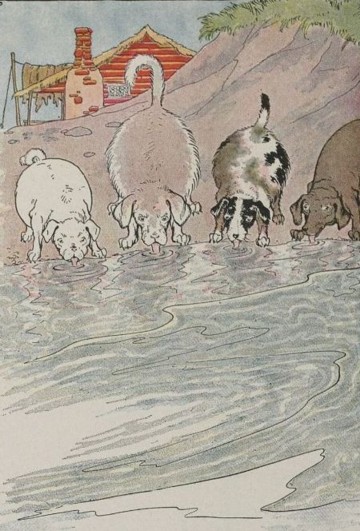PART A_1
Let’s learn vocabulary. Listen and repeat the words and the sentences with your tutor.
PART A_2
| 1. soak | /sohk/ |
| -to make something very wet, or (of liquid) to be absorbed in large amounts | |
| It is nice to soak in warm bath water. | |
| 2. council | /KOUN-suhl/ |
| -a group of people elected or chosen to make decisions or give advice on a particular subject | |
| The council held a meeting for an important issue. | |
| 3. lap | /lap/ |
| -(of an animal) to drink a liquid by taking it in small amounts into the mouth with a lot of short, quick movements of the tongue | |
| I saw a cat lapping up milk. | |
| 4. remain | /ri-MEYN/ |
| -to stay in the same place or in the same condition | |
| The weather remained cloudy. | |
| 5. burst | /burst/ |
| -a sudden, brief increase in something, or a short appearance of something | |
| She burst into laughter after hearing her friend’s joke. |
PART B_1
Let’s read the story. Please read it aloud, and I will check your pronunciation and intonation.
PART B_2
The Dogs and the Hides

Some hungry Dogs saw a number of hides at the bottom of a stream where the Tanner had put them to soak
A fine hide makes an excellent meal for a hungry Dog, but the water was deep and the Dogs could not reach the hides from the bank.
So they held a council and decided that the very best thing to do was to drink up the river.
All fell to lapping up the water as fast as they could.
But though they drank and drank until, one after another, all of them had burst with drinking, still, for all their effort, the water in the river remained as high as ever.
Do not try to do impossible things.
PART C_1
Let’s answer comprehension questions. Please answer them based on the story.
PART C_2
| 1. | What did the Dogs do after seeing a number of hides at the bottom of a stream? |
| 2. | What plan did they make in order to reach the hides? |
| 3. | What happened at the end of their plan? |
PART D_1
Let’s discuss the story. Please answer the questions below and express your opinions.
PART D_2
| 1. | Why do you think the Dogs’ plan failed? What could have been a better plan? |
| 2. | How would you describe the Dogs based on their decisions? |
| 3. | What do you mean by the saying “Do not try to do impossible things.”? |
| 4. | Do you think it is okay to dream big? Why or why not? |
| 5. | How should you respond to a person doubting your ability to succeed? |
REVIEW AND FEEDBACK
Now, let us review the things that you learned in this lesson.
ではこのレッスンで学んだことを振り返りましょう。
(Please give a short feedback on how your student did on your class.)
| Grammar 文法 |
Pronunciation 発音 | Vocabulary 単語 |
Comprehension 理解 |
|
|---|---|---|---|---|
 GOOD GOOD |
文法の誤りはほとんどなく、完全な文章で話すことができる | ほとんどの単語をはっきりと正しく発音することができる | 習った表現を適切に使うことができる | 文章を理解し、質問に正しく答えることができる |
 FAIR |
文法の誤りはあるが、完全な文章で話すことができる | 発音の練習が必要な言葉がいくつかある | たまにミスはあるが、習った表現を適切に使うことができる | 文章を完全に理解するのは難しく、質問に正しく答えられないときもある |
 POOR |
文章で話すのは難しく、単語だけで話すことができる | 発音の練習が必要である | 習った単語と表現を少しだけ使うことができる | 文章を理解するのは難しく、質問に答えるのは難しい |
Parts of this lesson material are based on:
An eBook from The Project Gutenberg.
This eBook is for the use of anyone anywhere at no cost and with almost no restrictions whatsoever. You may copy it, give it away or re-use it under the terms of the Project Gutenberg License included with this eBook or online at www.gutenberg.org
An eBook from The Project Gutenberg.
This eBook is for the use of anyone anywhere at no cost and with almost no restrictions whatsoever. You may copy it, give it away or re-use it under the terms of the Project Gutenberg License included with this eBook or online at www.gutenberg.org